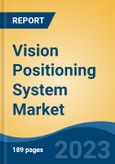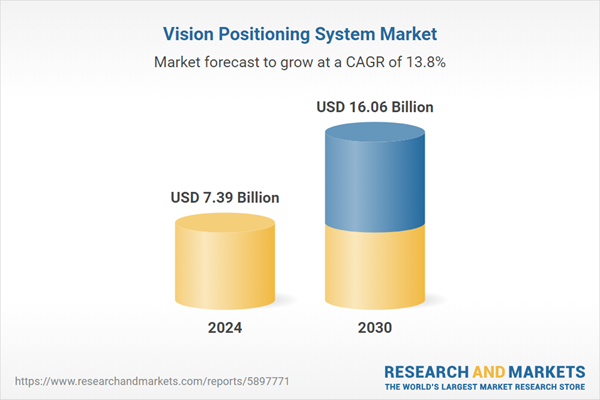Processors is the fastest growing segment, North America is the largest regional market
Speak directly to the analyst to clarify any post sales queries you may have.
10% Free customizationThis report comes with 10% free customization, enabling you to add data that meets your specific business needs.
Key Market Drivers
The Vision Positioning System market is experiencing growth driven by the escalating need for precise localization in advanced technological applications. Key market momentum is seen in substantial corporate investment in underlying enabling technologies. For example, according to Bosch, in June 2025, during the Bosch Tech Day 2025 global event, the company announced an investment exceeding 2.5 billion euros in the development of artificial intelligence by the end of 2027, particularly for assisted and automated driving. This strategic financial commitment from an industry leader emphasizes the integral role of AI and associated perception systems in future technological landscapes.Key Market Challenges
A notable challenge impeding market growth for Vision Positioning Systems is the substantial implementation costs associated with their deployment and the requisite infrastructural investments. This financial burden acts as a significant deterrent, particularly for small and medium-sized enterprises, which often face budget constraints preventing them from allocating considerable capital to new technological integrations. The high initial investment required for specialized hardware, software, and necessary system upgrades prolongs the payback period, making adoption less appealing to a broader range of potential users.Key Market Trends
The development of cost-effective and cloud-based Vision Positioning System (VPS) solutions is significantly impacting market expansion by broadening accessibility and reducing operational overhead. This trend directly addresses the previous market challenge of substantial implementation costs, making advanced visual positioning accessible to a wider array of enterprises, including small and medium-sized businesses. According to the Association for Advancing Automation (A3), a trade group for the robotics industry, orders for factory robots in North America plunged by nearly one-third in 2023 from 2022's record volume, underscoring the critical need for more economically viable automation components. This economic pressure is driving innovation towards more affordable and scalable VPS deployments.Key Market Players Profiled:
- AEye Inc.
- Anthropic PBC
- Cruise Munich GmbH
- Sick AG
- Pepperl+Fuchs Vertrieb Deutschland GmbH
- SZ DJI Technology Co. Ltd
- Cognex Corporation
- NavVis GmbH
Report Scope:
In this report, the Global Vision Positioning System Market has been segmented into the following categories:By Technology Type:
- Visual Odometry
- Lidar-Based
By Component:
- Cameras
- Processors
- Software
By End-User:
- Agriculture
- Healthcare
- Construction
- Gaming
By Region:
- North America
- Europe
- Asia-Pacific
- South America
- Middle East & Africa
Competitive Landscape
Company Profiles: Detailed analysis of the major companies present in the Global Vision Positioning System Market.Available Customizations:
With the given market data, the publisher offers customizations according to a company's specific needs. The following customization options are available for the report.Company Information
- Detailed analysis and profiling of additional market players (up to five).
This product will be delivered within 1-3 business days.
Table of Contents
Companies Mentioned
The companies profiled in this Vision Positioning System market report include:- AEye Inc.
- Anthropic PBC
- Cruise Munich GmbH
- Sick AG
- Pepperl+Fuchs Vertrieb Deutschland GmbH
- SZ DJI Technology Co. Ltd
- Cognex Corporation
- NavVis GmbH
Table Information
| Report Attribute | Details |
|---|---|
| No. of Pages | 180 |
| Published | November 2025 |
| Forecast Period | 2024 - 2030 |
| Estimated Market Value ( USD | $ 7.39 Billion |
| Forecasted Market Value ( USD | $ 16.06 Billion |
| Compound Annual Growth Rate | 13.8% |
| Regions Covered | Global |
| No. of Companies Mentioned | 9 |









